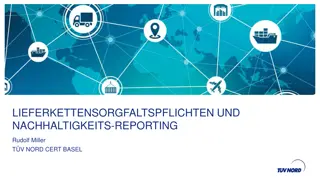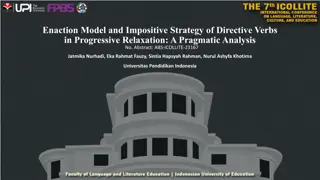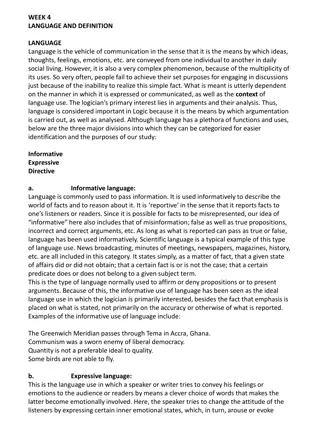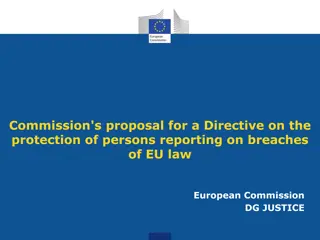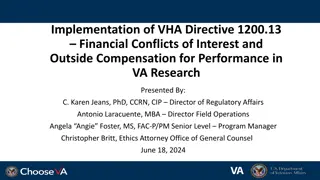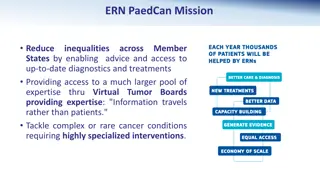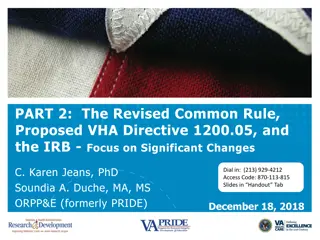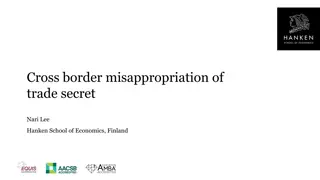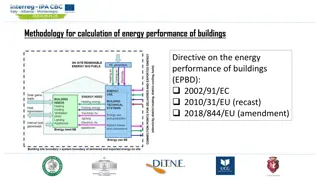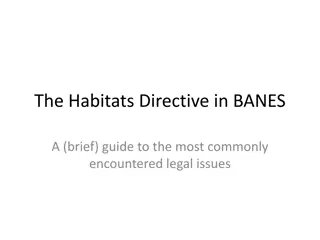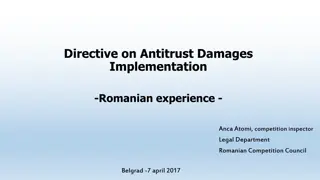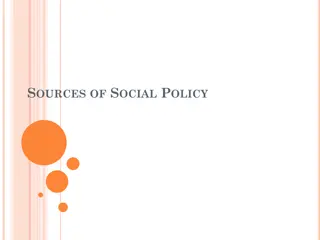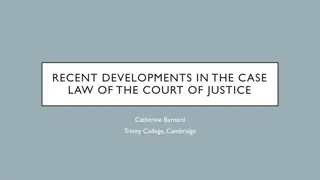
Seveso Directive Overview: Prevention of Major Accidents and Environmental Protection
Learn about the Seveso Directive, a crucial EU legislation established after a major accident in Italy in 1976. The directive aims to prevent and control major accident hazards involving dangerous substances, with a focus on protecting both human lives and the environment. Explore its scope, objectives, target areas, and general obligations for safety management systems.
Download Presentation

Please find below an Image/Link to download the presentation.
The content on the website is provided AS IS for your information and personal use only. It may not be sold, licensed, or shared on other websites without obtaining consent from the author. If you encounter any issues during the download, it is possible that the publisher has removed the file from their server.
You are allowed to download the files provided on this website for personal or commercial use, subject to the condition that they are used lawfully. All files are the property of their respective owners.
The content on the website is provided AS IS for your information and personal use only. It may not be sold, licensed, or shared on other websites without obtaining consent from the author.
E N D
Presentation Transcript
SEVESO DIRECTIVE SERVERS: TU E YA AR PEL N KAR ILI
What is SEVESO? The Seveso is the major accident happened in Italy in 1976. Prompted the adoption of legislation aimed at the prevention and control of such accidents.
Aim of the SEVESO Directive The aim is two-fold; Firstly, the prevention of major-accident hazards involving dangerous substances. Secondly, as the accidents do continue to occur , the aim that the limitation of the consequences of such accidents not only for man but also the environment.
Seveso is the most important EU directive , which was issued to protect people and the environment.
Target of Seveso To form a method of risk assesment
Scope of SEVESO Both industrial activities as well as the storage of dangerous chemicals Provides 3 levels of proportionate controls; 1) Less than the lower treshold level 2) Above the lower treshold level 3) Above the upper treshold level
Out of Scope Nuclear Safety Transport of Dangerous Substances Intermediate Temporary Storage Outside Establishment Transport of Dangerous Substances by Pipelines
General and Specific Obligations Control measures aimed at the prevention of major accidents Control measures aimed at the limitation consequences of major accidents
Safety Management System Managerial and organizational methods in general and in particular or in significant changes of industrial practice to relating to risk management which have occured to past ten years
Emergency Plans Internal External
Land-Use Planning Siting of new establishment Modifications to existing establishments New developments such as transport links Locations frequented by the public and residental areas in the vicinity of existing establishments
Information to and Consultation of the Public Passive Information Active Information
Accident Reporting Member States have the obligation to report major accidents to the Comission. The Comission has established a so- called Major-Accident Reporting System (MARS) and the Comminity Documentation Centre on Industrial Risks (CDCIR)
Inspections Organise an Inspection System which can either consist of a systematic appraisal of each establishment or of at least one on-site inspection per year.
Major-Chemical Accidents In Turkey Tupras Refinery at Izmit in 08/17/1999 OSTIM Explosions Tupras Refinery OSTIM Explosions
Due to Explosion in TUPRAS Greenhouse gases; CO2 CH4 N2O F-gases
Greenhouse Solutions 1.Eliminate/Minimize Fugitive Emissions 2.Capture and Re-insert Waste/Vent Gas(Methane) 3.Improve Combustion Efficiency 4.Improve Process Efficiency

